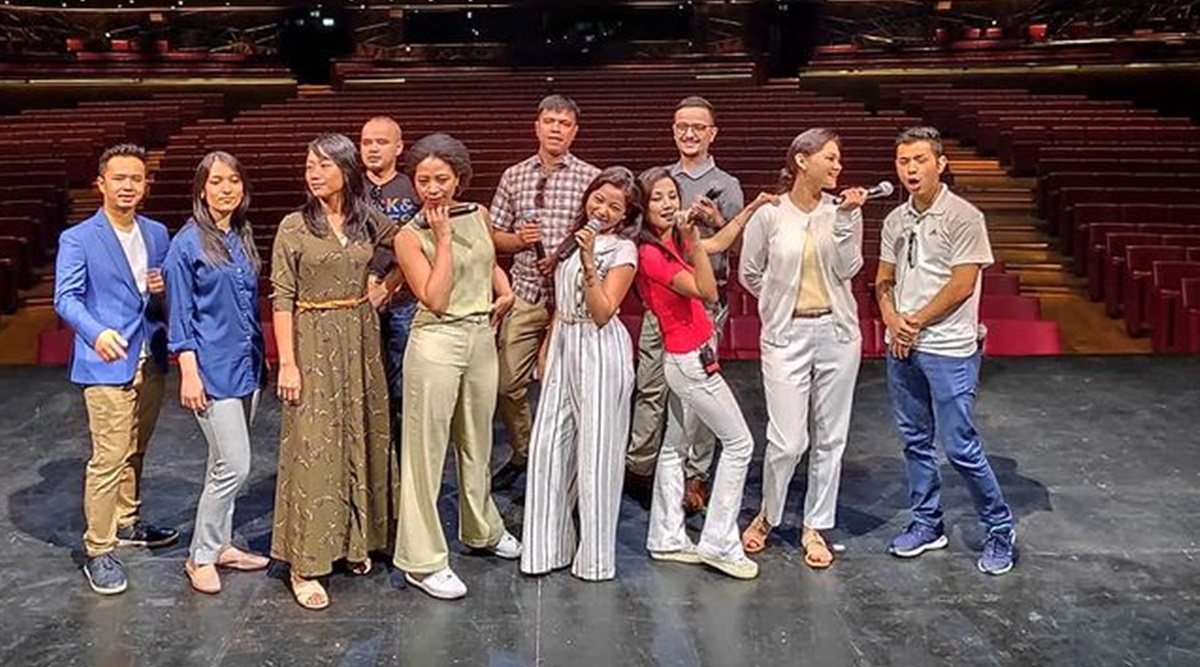[ad_1]
| New Delhi |
December 24, 2020 3:50:34 pm
 Take a look at what the choir is up to. (Source: Shillong Chamber Choir/Instagram)
Take a look at what the choir is up to. (Source: Shillong Chamber Choir/Instagram)
When 50-year-old Neil Nongkynrih, founder and conductor of Shillong Chamber Choir (SCC), the popular Indian chamber choir, decided to create a Christmas album for 2020, he didn’t want to use the same western motifs of snow and reindeers in the musical pieces. He took it upon himself to push the envelope a little. “Jesus was born in a desert, amid shepherds and camels. But how is it that our music almost never reflects the sound of the East, where Christ was actually born,” says Nongkynrih, who has created Christmas Come Home. The album includes hymns and carols in Urdu, Farsi, Aramaic, English and even Khasi, the mother tongue of most members of the choir.
“I am not saying that I am going to revolutionise the world by including the sound of West Asia. But I am certainly challenging some of the norms of Christmas. I am not against a Christmas tree or festivity, but through the album, we are just trying to tell the story much closer to how it happened. The sound, this time, represents the sound of the desert. The sound is a reminder of the origin of Christmas. And thereby the inclusion of middle-eastern languages,” says Nongkynrih, who trained as a pianist at the Trinity College and the Guildhall School of Music in London. He returned to his hometown in 2001 and formed the Shillong Chamber Choir. He was awarded a Padma Shri in 2015.
One of the most interesting experiences while creating the album was the inclusion of ancient Aramaic, which originated in the 1st Millenium BC and later became the language of ancient Western Asia, and is now considered a dead language. It is spoken by only a handful of people all over the world. “Contemporary Aramaic is still spoken by a few million people but the ancient one, the language that Christ spoke, is very difficult to find,” says William Basaiawmoit, the lead vocalist.
The choir sings the famed African-American song Go tell it to the mountain/ that Jesus Christ is born, a piece that has been recorded by many gospel singers for over a century. The Choir’s search led them to Melke Tekin, an elderly man in Switzerland, who still speaks Aramaic and translated the song for them. The Choir has medleyed the song with one of the most popular carols all over the world – Glory to God. The latter’s version is the one that was composed by German composer George Frideric Handel for his immensely successful work, Messiah.
A significant piece in the song, We the kings is a take on We three kings, the famous carol written as Three kings of Orient in 1857 by John Hopkins Junior. “We think there were several, not three, thus the change. It’s unlikely that only three men came from Persia to Jerusalem,” says Nongkynrih, who has used Urdu, Farsi and English in this one. Since the travelling men, according to the Choir, would have spoken Farsi, they decided to include the language in this piece. The song also has a video and showcases the story of the kings through sand art created by Israeli sand artiste Ilana Yahav. It opens with a haunting beginning in Farsi, a reminder of how an azaan sounds. “On one hand they are singing in Farsi and the lady who did the sand artistry is Israeli. So in times of conflict, there is an underlying message here, how much peace there could be,” says Nongkynrih, who has merged Jingle bells with Hallelujah chorus in Hebrew and has got the group to sing Silent night in Khasi, first language of most of the members in the Choir.
During the pandemic, the Choir has done a slew of digital concerts and managed to create a few videos for Christmas. The month also marks their 10th anniversary as the winners of the show India’s Got Talent.
© The Indian Express (P) Ltd
[ad_2]
Source link